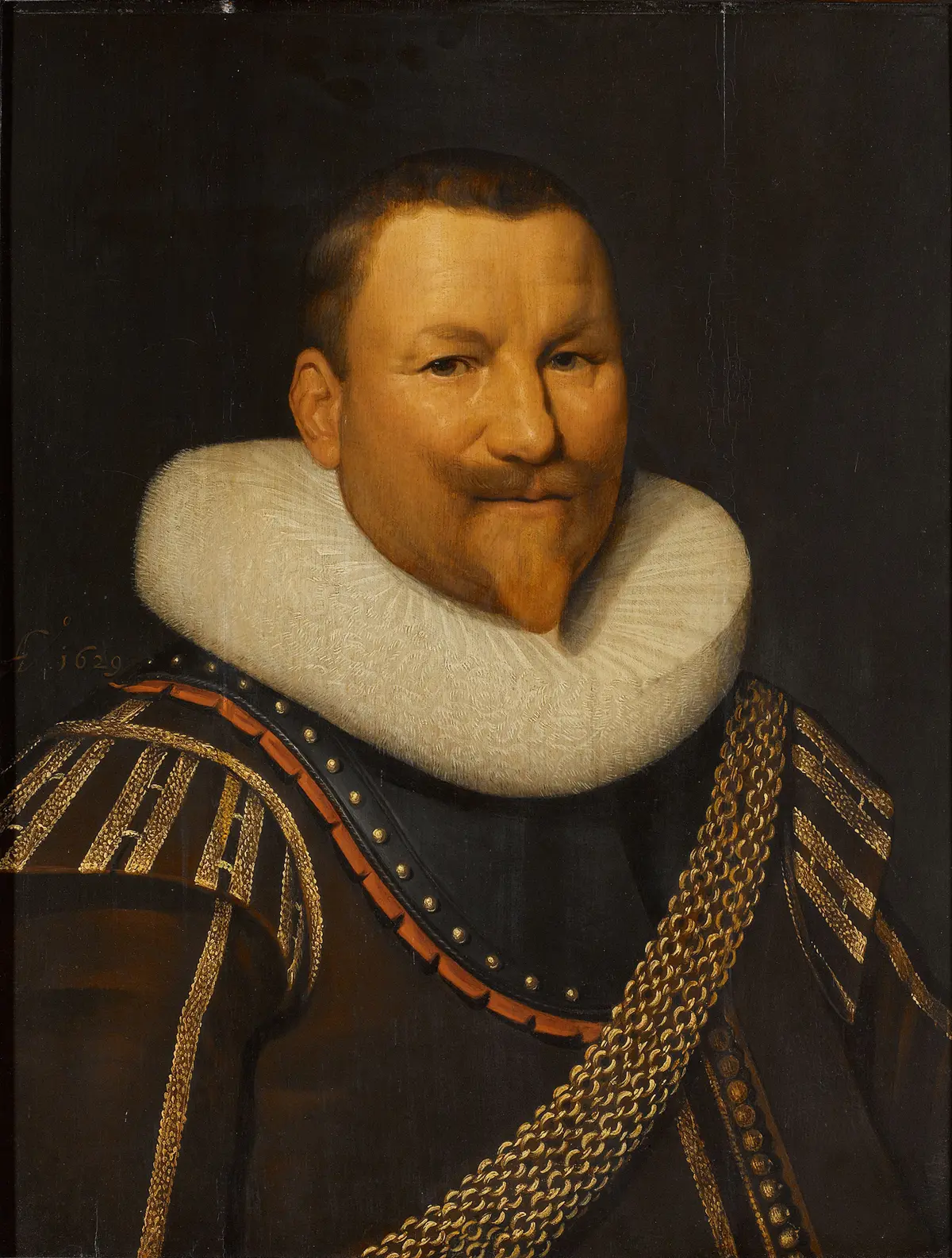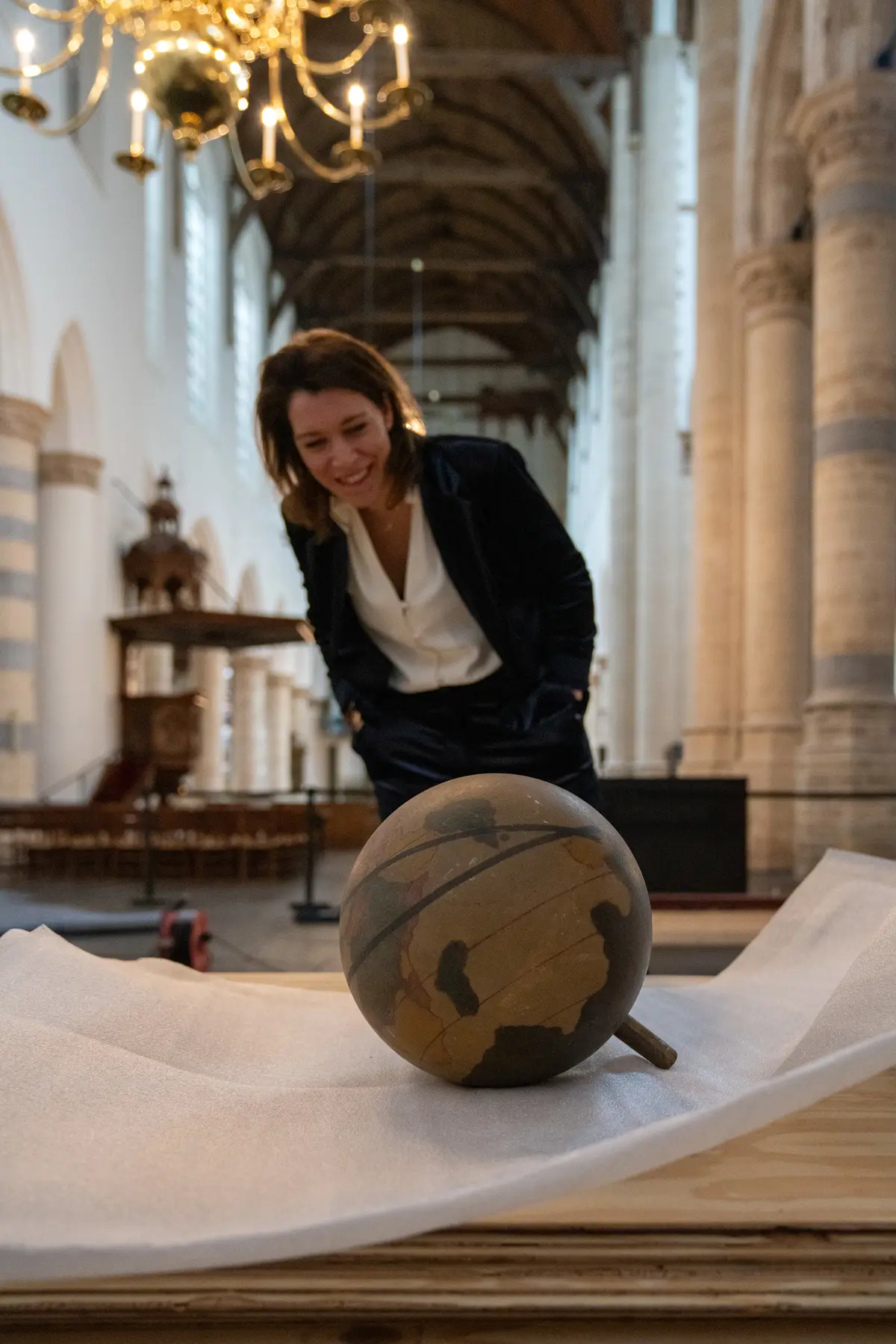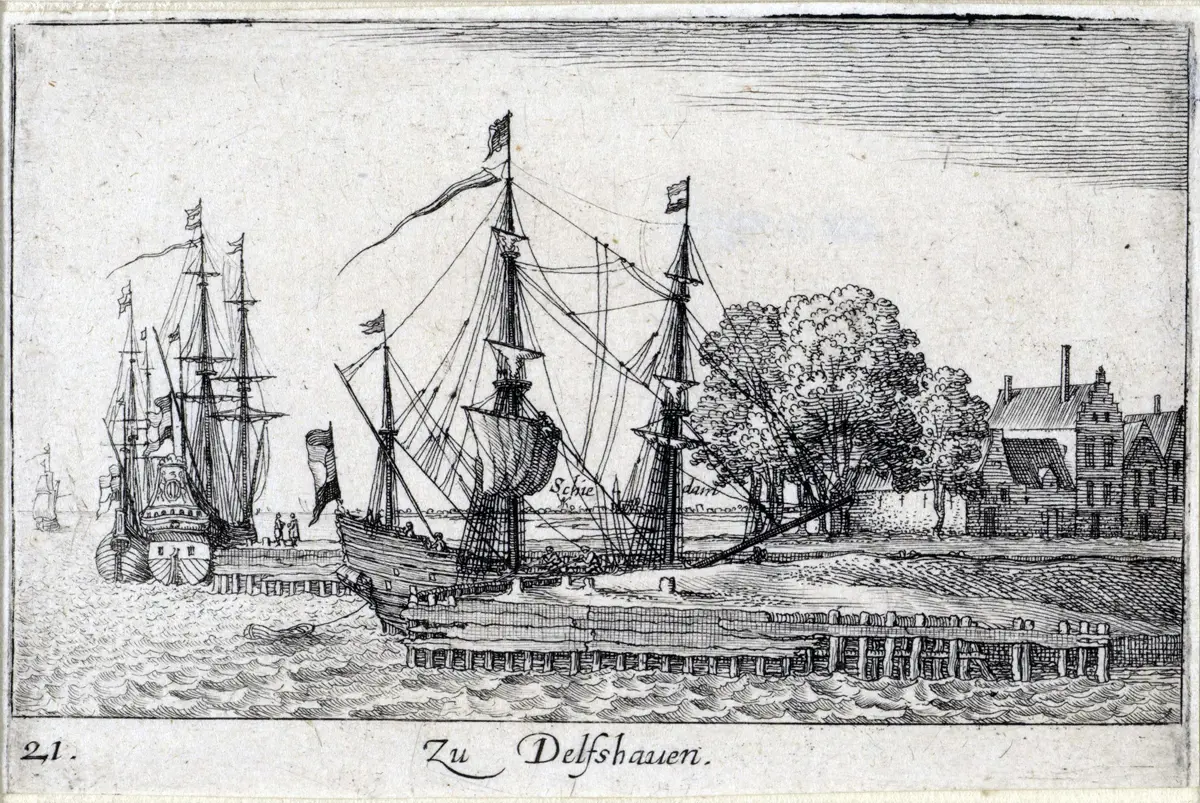Piet Hein: the death of a naval hero
The monument for Piet Hein
Shortly after Hein's death in 1629, the government decided that the Admiralty of Rotterdam (one of the five authorities organizing the navy) should commission a monument for him.

Architect Arent van 's-Gravesande was asked to design it. He shaped it like an aedicule, a classical temple, and chose a local black stone and white Carrara marble as materials. In the centre of the monument, a recumbent statue of Piet Hein was placed, lying in full armour, crafted by the sculptor Pieter Adriaenszoon 't Hooft.
A Latin text on the back wall, written by the poet Caspar Barlaeus, narrated the seafarer's life. The background for this text was made of the finest quality black stone, and the lettering was done in gold leaf. The effect was so impressive in the 17th century that it was compared to "bright shining stars [that] stand and twinkle in the dark night". At the top of the monument, Hein's family coat of arms was placed: a bird (in Dutch “pietje”) on a fence (in Dutch “hein”, from “omheining”). On either side, a celestial and terrestrial globe stood as symbols of his skilled seamanship. Above the monument hung a black flag with his family coat of arms, a cabinet containing his armour, command staff, and other items, and the three ship flags with Burgundian crosses, captured by Hein in 1628 with the silver fleet. By 1639, the monument was completed.
Previous restorations
A substantial, heavy, natural stone monument like this requires considerable maintenance. In 1854, it underwent a major restoration in which defects were repaired and touched up. Everything was washed, sanded, and polished, and the letters of the inscription were gilded again with real gold leaf. Approximately thirty years later, a second restoration took place due to damages and potential subsidence in various parts of the monument. The well-known stone masonry company of Frans Stolzenberg, along with a carpenter and contractor from Delft, undertook the restoration. They opened the burial vault, replaced the lead and wood of the coffin, repaired and anchored the monument, and worked on the fence. An interesting detail: just after this restoration, in 1882, an anonymous donor gifted a piece of bone and a lock of hair from Piet Hein to the Rijksmuseum… Around 1925, additional work was done on the church floor in front of the monument.
Current restoration
Once again, the monument of Piet Hein is undergoing restoration, as it is partially sinking or cracking, and the stone contains harmful salts that can cause discoloration or damage. This process needs to be halted in order to preserve art-historical heritage such as this monument for future generations. Therefore, based on the guidance of experts, an intensive restoration plan has been developed and is being executed by specialized restoration stone masons and other craftsmen, such as a gilder for the inscriptions and conservators specializing in sculpture or antique celestial and terrestrial globes. Initially, the monument is disassembled, then removed from the church in separate parts. Desalination and the actual restoration work are carried out in the workshop of the stone restorers. If all goes according to plan, the monument will be reinstalled in the Oude Kerk around mid-2025. At that time, a separation layer will be applied between the church wall and floor and the monument itself to prevent the harmful salts from affecting it again
Piet Hein: the death of a naval hero

Who was Piet Hein?
Piet Hein was born in 1577 in Delfshaven, the former harbour of Delft (now part of Rotterdam). He called it a true “seaside town” because it primarily thrived on herring fishing.

The monument for Piet Hein
Shortly after Hein's death in 1629, the government decided that the Admiralty of Rotterdam (one of the five authorities organizing the navy) should commission a monument for him.

A controversial past
Many people associate Piet Hein with slavery because he worked for the VOC and WIC. These institutions indeed engaged in the trading of enslaved individuals, but this occurred after Hein's death.

Piet Hein at sea
Among his contemporaries, Piet Hein stood out for his strong leadership at sea, his courage, and craftsmanship.

Piet Hein - Symphonische Rock Versie
Je kent vast het bekende liedje van Piet Hein. Maar hoe zou datzelfde liedje klinken in een hele andere stijl? Bijvoorbeeld in een nogal bombastische symphonische rock versie. Luister maar!

Piet Hein - Hiphop Versie
Je kent vast het bekende liedje van Piet Hein. Maar hoe zou datzelfde liedje klinken in een hele andere stijl? Bijvoorbeeld in een vrolijke old-skool hiphop versie. Luister maar!

Piet Hein - Zeemanslied
Je kent vast het bekende liedje van Piet Hein. Maar hoe zou datzelfde liedje klinken in een hele andere stijl? Bijvoorbeeld als een zeemanslied. Luister maar!

Piet Hein - Oratorium
Je kent vast het bekende liedje van Piet Hein. Maar hoe zou datzelfde liedje klinken in een hele andere stijl? Bijvoorbeeld als oratorium. Luister maar!

Piet Hein - Swing
Je kent vast het bekende liedje van Piet Hein. Maar hoe zou datzelfde liedje klinken in een hele andere stijl? Bijvoorbeeld in swing style. Luister maar!

Glossy Piet Hein: de disclaimer
Naar aanleiding van de expositie Piet Hein: de dood van een zeeheld en de koppeling met het herdenkingsjaar slavernijverleden heeft de Oude en Nieuwe Kerk een glossy uitgebracht over het leven van Piet Hein en wat voor invloed onze geschiedenis heeft op het leven van vandaag.

